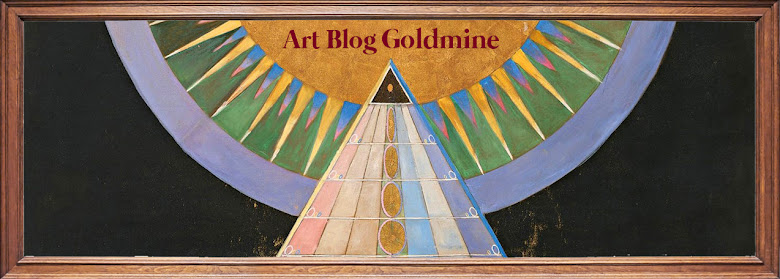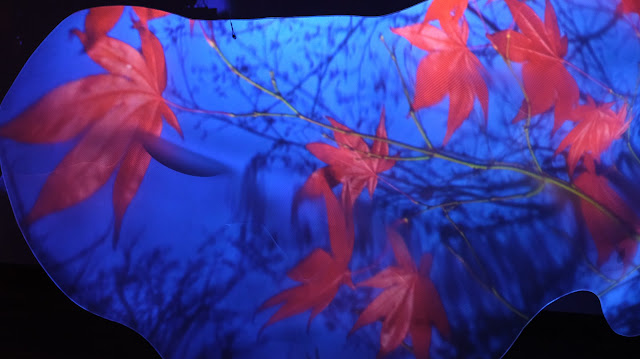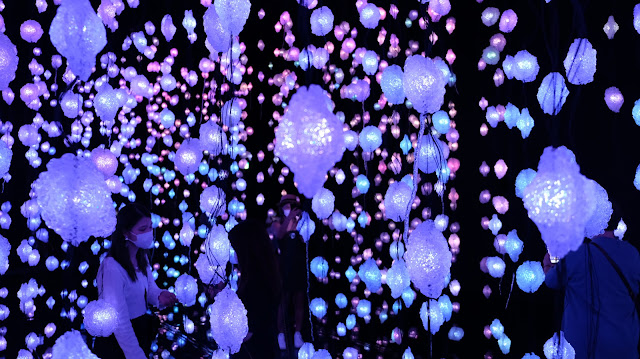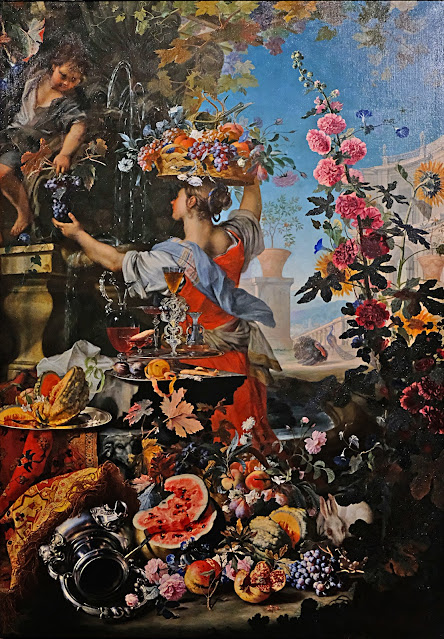%20(still),%202000.webp) |
| A still of Open My Glade (Flatten), 2000, Video |
Topics Covered
- Beginning of the Tragedy
- The Artist’s Image in the Art World: Obliterated Video Technician
- Artworks: I’m Not a Girl Who Misses Much, Ever is Overall
- Prostitution: Mentally and Physically Abused Masochist
- Artworks: Physical Abuse, Mental Abuse, Group Sex
Beginning of the Tragedy
Rist grew up in an unstable family. Her parents divorced when she was sixteen, due to his father's debauchery of constantly dating a new mistress. Her father, a doctor who mainly treated Italian laborers, was more interested in his mistresses rather than in educating his children. Her father's negligent personality resulted in a matriarchal family, where her mother had to discipline her five children. Her mother was a generous and caring teacher of a one-room school for forty-five students. Growing up, the artist was fond of popular culture and admired legendary celebrities. She was especially impressed by the stories of John Lennon and Yoko Ono.Physics being her favorite subject in High School, She studied theoretical physics at the University of Applied Arts, in Vienna for four years since 1982. University widened her perspective and opened her up to an entirely new realm of visual art. Intrigued by the unfamiliar realm, she additionally took philosophy, photography, and illustration. During her study at the university, she became familiar with experimental cinema. fascinated with the field, she decided to work in a related discipline.
After graduating, in 1986, she returned to Switzerland and enrolled at the School of Design at Basel to continue pursuing her passion for video. To pay for her studies, she took a video part-time job at Ciba-Geigy, a big Swiss chemical firm. The company had a well-equipped lab for producing promotional videos. Through the job, she was able to access current technologies and machines. At the lab, she worked for a filmmaker who supported her ambition and talent. He let her use the lab at night, so she could familiarize herself with operating the equipment and editing videos. Through the course of actions, she ultimately produced a seven-minute video that launched her career in visual art. It was called “I’m Not the Girl Who Misses Much.”
Ironically, Rist originally had no intention of becoming an artist when she was studying at her first university. Articles and interviews merely list out her record without stating what happened to her during her enrollment at two schools. I suspect that a series of ordeals must have happened for her to create such a frightening film, but any clue is nowhere to be found. Professional art media remain elusive about what happened to her. The artist intentionally hides her painful past from the art world.
The artwork is a video that established her reputation in the art world. In the eight-minute video, a woman in a light blue dress walks down a city street. She smashes car windows by wielding a large flower, while a policewoman nods and passes her approvingly. The woman wielding a flower is a persona of the artist that represents her character in the art world. She is a woman of potent sex appeal and is aware of her power. She wields it at her will regardless of the cost she has to pay afterward. The video doesn’t directly show her behavior of exercising her sexual power over the opposite sex. Instead, it shows the representation of the behavior. The woman wielding a flower represents the artist’s past self, who was unaware that she would become a whore used to happiness.
The two renowned videos of the artist demonstrate the cause, Ever is Overall, and its effect, I’m Not a Girl Who Misses Much. By showing the fatal consequence of wielding sexuality as a weapon, the identity of the artist communicates an unspoken and commonly accepted rule endorsed by modern society. She submitted both of her videos to renowned film festivals, Biennials, and art institutions. the submission granted her recognition and accolades from the authorities in the art world as a price of her humiliation. She also earned representations with mega-galleries: Luhring Augustine and Hauser & Wirth.
The implicit message embodied by the artist influences popular culture. In 2016, Beyonce paid homage to the artist by inserting a scene derived from “Ever Is Over All” in the music video of her newly released song "Hold Up". In the music video, the singer skips down a sidewalk in a flowing yellow dress and smashes car windows along the way with a baseball bat. Its target audience of Beyonce is prone to develop a similar tendency to the singer’s actions in the music video. Consequently, the homage begets the next generation of radical feminists, contributing to and justifying the vicious cycle of violence against the uninformed.
Accordingly, the identities of her sex partners are impossible to trace. Yet, a suspected group of people exists as acquaintances and collaborators of the artist working in visual arts and pop culture. In an interview with The New Yorker in 2020, the artist directly confirms she was once in three years of romantic relationship with a composer, Anders Guggisberg, who contributed to producing soundtracks of her reputed video artworks. The titles of the soundtracks in their collaboration album also suggest their relationship. However, whether he was involved in group sex is unknown.
The erotic content is specially catered for beau-monde, who seeks the joy of humiliating the unfortunate. In the exhibition, The artist invites the audience to interact with her installation by sitting or lying on the furniture. Through the interaction, the audience immerses themselves in the erotic ritual of group sex.
The Artist’s Identity in the Art World: Obliterated White Horse
Artwork 1: I’m Not a Girl Who Misses Much, 1986
In the glitchy seven-minute video, the artist jumps frantically with her breast spilling out from her dress. She sings “I’m Not a Girl Who Misses Much”, the first line of "Happiness is a Warm Gun" by the Beatles, repeatedly throughout the film in a child-like, high-pitched voice. It reflects the artist’s state of mind. The title of the song and the lyrics she sings in the video directly communicates her identity to the audience. She is a whore without a past. Instead of adhering to a long-term goal and valuing her past, she is used to physical pleasure gratified by an erected reproductive organ of a male. The glitchy filter and frantic jumping of the artist suggest she is not mentally stable. The artwork addresses the current, insane state of the artist, but doesn’t show the course of actions that led her to the state of insanity shown in the video.
Ironically, Rist originally had no intention of becoming an artist when she was studying at her first university. Articles and interviews merely list out her record without stating what happened to her during her enrollment at two schools. I suspect that a series of ordeals must have happened for her to create such a frightening film, but any clue is nowhere to be found. Professional art media remain elusive about what happened to her. The artist intentionally hides her painful past from the art world.
Artwork 2: Ever is Overall (1997)
The two renowned videos of the artist demonstrate the cause, Ever is Overall, and its effect, I’m Not a Girl Who Misses Much. By showing the fatal consequence of wielding sexuality as a weapon, the identity of the artist communicates an unspoken and commonly accepted rule endorsed by modern society. She submitted both of her videos to renowned film festivals, Biennials, and art institutions. the submission granted her recognition and accolades from the authorities in the art world as a price of her humiliation. She also earned representations with mega-galleries: Luhring Augustine and Hauser & Wirth.
The implicit message embodied by the artist influences popular culture. In 2016, Beyonce paid homage to the artist by inserting a scene derived from “Ever Is Over All” in the music video of her newly released song "Hold Up". In the music video, the singer skips down a sidewalk in a flowing yellow dress and smashes car windows along the way with a baseball bat. Its target audience of Beyonce is prone to develop a similar tendency to the singer’s actions in the music video. Consequently, the homage begets the next generation of radical feminists, contributing to and justifying the vicious cycle of violence against the uninformed.
Prostitution: Mentally and Physically Abused Masochist
Her artworks mainly consist of two types: subversive feminist video art and indoor installation art featuring group sex. Description, analysis, and evaluation of the first type of her artwork are prevalent in professional art media, yet that of the second type is completely censored online. Online articles and interviews incorporate vague and broad expressions, such as intimate and sexual to describe her theme of the second type of artwork. Her story of group sex stays and is protected securely in her indoor exhibitions.Accordingly, the identities of her sex partners are impossible to trace. Yet, a suspected group of people exists as acquaintances and collaborators of the artist working in visual arts and pop culture. In an interview with The New Yorker in 2020, the artist directly confirms she was once in three years of romantic relationship with a composer, Anders Guggisberg, who contributed to producing soundtracks of her reputed video artworks. The titles of the soundtracks in their collaboration album also suggest their relationship. However, whether he was involved in group sex is unknown.
The erotic content is specially catered for beau-monde, who seeks the joy of humiliating the unfortunate. In the exhibition, The artist invites the audience to interact with her installation by sitting or lying on the furniture. Through the interaction, the audience immerses themselves in the erotic ritual of group sex.
The artist recently had a major solo exhibition called "Behind Your Eyelid" at Tai Kwun, a former Central Police Station turned into a contemporary art museum in Hong Kong. I got to know her through the exhibition. I was so astonished by its content I had to write an in-depth review of the exhibition. The review contains the analysis of the rest of the artworks not listed in this post. Reading the review is recommended for interested readers.
Artwork: Physical Abuse
 |
| Enlighten My Space, 2008, Video installation 2022, Installation view, Tai Kwun |
Artwork: Mental Abuse
 |
| Multicolored Ghost, 2020 2022, Installation view, Tai Kwun |
The artwork shows the mental state of the artist. The image in the
picture frame shows that her mind was penetrated and modified by her
sex partners. In a small glass display case, eight bird head bones
are arranged as a cue that the artist had dissociative identity
disorder. She had eight characters within herself and her character
changed according to the partner she faced. Two likely causes of DID
in her case are loss of memory due to damaged brain functioning and
psychological violence from her partners.
Group
Sex
Artwork 1: Enlightened Hips
 |
| Enlightened Hips, 2011, Video installation 2022, Installation view, Tai Kwun |
A notable characteristic of the artwork is video projection. The projection technique is a genius and original invention devised by the artist. The projection turns a mundane object into a fascinating artwork conveying the artist’s story of group sex. Though she is not a skilled craftsman, she is capable of staging a visually fascinating experience.
The rock in the center represents the body of the artist. The rock show the physical and mental aspects of the human body. The plain rock represents the physical body and the projected video represents the mental images that sculpted the physical body of the artist. The mass media planted those images in her brain, which controls the formation of her body.
 |
| Enlightened Hips, 2011, Video installation 2022, Installation view, Tai Kwun |
Artwork 2: Caressing Dinner Circle, Do Not Abandon Me Again
 |
| Caressing Dinner Circle, 2022. Installation view, Tai Kwun |
 |
| Do Not Abandon Me Again, 2022. Installation view, Tai Kwun |
 |
| Do Not Abandon Me Again, 2015. Installation view, Kunsthaus Zürich |
Caressing Dinner Circle is a spatially expanded form of artwork denoting group sex. The position of female artists in the art world has gradually expanded since the 1930s, when the first female Surrealist, Meret Oppenheim, exhibited “Object” and “My Nurse”. Back then, the artwork of the female artist was able to occupy as small space as the size of a plate. In other words, she couldn’t stage the complete scene of the artwork, the whole table setting. Female artists’ occupation of space has significantly expanded from a size of a plate to a whole interior, as their position in the art world expanded.













.jpg)
.JPG)
.JPG)
.JPG)
.JPG)
.JPG)
.JPG)





.png)
.png)





.jpg)
.jpg)









